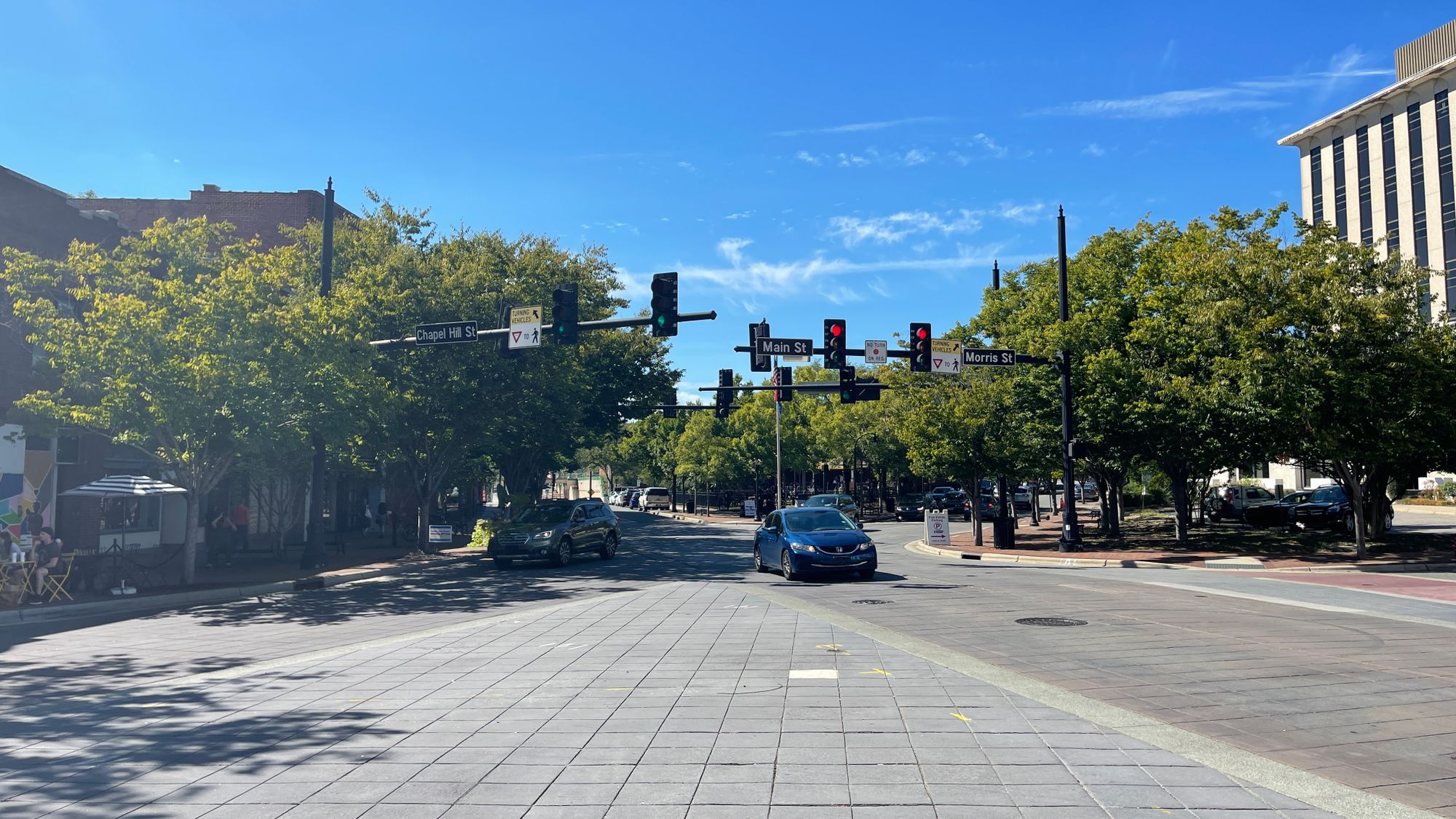Who Owns The Streets?

The Streetery is an initiative from DDI that helped create outdoor seating options for local businesses during the COVID-19 pandemic. As far as I know, it worked. By fall of 2020, Downtown Durham was moderately functional thanks to DIY outdoor seating and to-go cocktails.
The program took a hiatus until the following spring. Speculation about the permanence of the infrastructure supporting the Streetery made the rounds online and elsewhere. As someone who has spoken at length about the need to close off the Loop to non-essential vehicle traffic, I was not optimistic about the lasting legacy of the Streetery. But COVID made us rethink a lot of procedures and systems. Why not this?
On Friday, this announcement from Downtown Durham Inc. was brought to my attention.
Note: because of increased traffic due to this weekend's Duke Commencement, we will not be closing streets at this Streetery, but the festivities and performances will continue!
— Downtown Durham, Inc. (@DowntownDurham) September 22, 2021
I want to make this about Duke being evil overlords but it’s not (entirely) about that. There seems to be a lack of willpower on the part of DDI and the city to take bold action.
My colleague at Bike Durham, Erik Landfried, said it well.
A bunch of Duke parents and alums are in town, so we can't close the roads to cars.
— Erik Landfried (@DurhamComplete) September 24, 2021
If you're not committed to an equitable future, it's easy to dilute programs like this until they are essentially useless. https://t.co/3LlGg5CeAt
Some of those bold actions will feel like pulling teeth. I won’t know how appropriate that metaphor is until my insurance covers me getting my wisdom teeth pulled in eight months. And just like my wisdom teeth, we are at a point now where the issue can’t be ignored. It’s not enough to just ask people to consider taking the bus, walking, or biking instead of driving. Our hand has to be forced.
The early pandemic was an opportunity to re-orient people to public spaces after we were sent into hibernation. No one was driving. The streets were empty. Issues like disrupting traffic during Commencement weekend were irrelevant. A perfect time to make lemonade out of lemons. But we have little juice to show for our time away.
I understand that we are in the midst of a global pandemic. Unforeseen challenges continue to tear through our communities. Redesigning downtown Durham might not be the highest priority. But the Streetery is low-hanging fruit. Close the streets and redirect traffic. The city would make more money feeding people into parking decks. They could use some of that money to provide transport for people from the decks to restaurants and hotels, especially those with disabilities. Yes, if it were that easy, they would have done it already. I’m under no illusions that this work is simple. But as the champion of calculated risk-tasking Ms. Frizzle always says, “it’s time to take chances, make mistakes, and get messy.”
I spend a lot of time on the road. I’m particularly unsympathetic to the tribulations of people behind the wheel. The psychological and physical abuse endured by cyclists is punishing, if not mortally wounding. Just yesterday, a truck sped up behind me to try and pass on a one-way road near downtown and almost slammed my back tire. Later that same day, a block from my house, a car clipped my bike’s rearview mirror. Half-a-foot more to the right and it would’ve been broken bone instead of broken glass. Drivers don’t see bikers as people; they’re a nuisance. An irritation that can be remedied with force from the behind the wheel of a car. Particular during Duke events, downtown becomes a game of Twisted Metal. Out-of-town drivers don’t know where they’re going but drive like it’s a monster truck rally.
I wrote a piece about my experience during the NYC-PHL ride hosted by the East Coast Greenway Alliance. Climate change was a major theme of the ride. Hovering over all these decisions about how to rethink urban planning and transportation systems is our eroding O-zone layer. Durham’s commitment to creating a safe, pedestrian-friendly, environmentally-sustainable city can’t erode, too.

